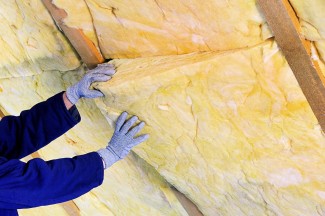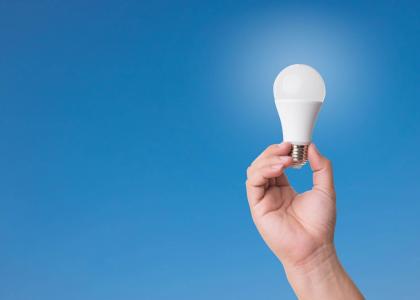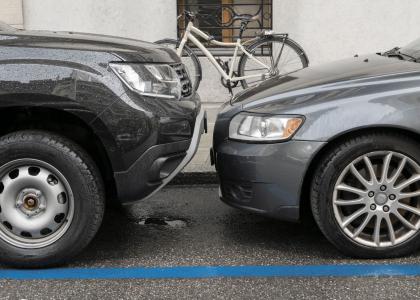Later this year, households across the country will begin tapping nearly $9 billion in new federal Home Energy Rebates to make energy-saving and electrification improvements. Low-income residents particularly stand to benefit from the lower utility bills. But states—charged with administering the rebate programs—need to ensure that low-income households can take advantage of the funding.
Congress created a broad structure for the rebates as part of the Inflation Reduction Act last year (along with providing other home efficiency funding), and the Department of Energy (DOE) is now preparing further guidance for state energy offices. If the rebates successfully support improvements in affordable housing, they could—aligned with the goals of the R2E2 initiative, which we co-lead—“lower utility bills, reduce greenhouse gas emissions, improve residents’ health, create good-paying local jobs, and help mitigate racial inequity.”
Here are five steps the department can recommend and that states can take as they design their programs:
Set aside funds for affordable housing: Congress intended to focus the rebates especially for affordable housing by significantly increasing the benefits for households earning under 80% of the local area median income (which is, on average, income under about $72,000 for a family of four). Such households can potentially cover the full cost of electrification investments with rebates and receive double the incentive of other households for whole-home efficiency rebates. However, there is a risk that higher-income owners of single-family homes could use up the funds before apartment building owners can develop more complex projects and before states and others can conduct effective outreach encouraging low-income homeowners to use them. States should dedicate funding for these low-income households and should provide longer-term commitments and progress payments to individual large projects.
Ease income verification: One of the rebate requirements that worries states and other likely program implementers most is verifying household incomes. This must be made easy, and no one approach will work for all households, but it should not be the responsibility of building contractors. Homeowners, at least in low-income neighborhoods, should be able simply to attest that they are under the income caps, subject to audits and penalties if the attestation is false. Households that qualify for other income-limited programs, like energy or food assistance, should also automatically qualify for the rebates. But for some households there may need to be a way to submit tax returns or pay stubs, or ideally link to IRS data, as other income-qualified programs do today. New Jersey utilities have successfully used a similar multipronged approach for determining eligibility for low-income programs.
Apartment buildings with resident income limits for federal or local assistance programs also should automatically qualify. But owners of “naturally occurring” affordable rental housing will have no way to know the incomes of their tenants; they should be able to qualify if the rents are affordable to low-income households. California adopts similar options for its Low-Income Weatherization Program.
Protect low-income renters: Landlords should not be able to take money that is intended to benefit lower-income households, improve the apartments, and then jack up rents, forcing the low-income tenants out. But if rent restrictions feel onerous, owners simply won’t use the rebates, and the buildings that most need improvements will continue to waste energy. We suggest tying the affordability requirements to the way owners qualified for the program. As in the California program, if a building qualified because the apartments have income limits, those limits should continue, and if they qualified because of low rents, then rents should continue to be affordable. The length of time for the requirements could be calibrated to the amount of funds.
Ensure residents get lower energy bills: In some colder regions, switching inefficient homes from natural gas furnaces or boilers to heat pumps could result in higher total energy bills. States should seek to avoid this by pairing electrification with better insulation, air sealing, and other efficiency measures that reduce energy use and spending regardless of fuel source. Whole-home retrofits are designed to combine different kinds of measures. But the electrification rebates also include rebates for insulation and air sealing, or they can be paired with other incentives.
States should also consider leveraging additional energy assistance funding to ensure—through additional efficiency measures if possible—that no low-income household that shifts to electric heat pays more than 6% of its income on electricity. Virginia is preparing to implement its Percentage of Income Payment Program to provide a similar kind of protection for low-income households.
Embed efficiency upgrades in other home improvements: Even $9 billion will only reach a small fraction of homes. To have a lasting impact, the rebate programs should help make energy efficiency a regular part of the home improvement market. Owners of affordable multifamily buildings have a key opportunity during project refinancing and capital needs assessments that typically are done after a decade or two. The state energy offices should work with state housing finance agencies to incorporate the energy upgrades and rebates (perhaps in the form of loans rather than grants to be compatible with the Low-Income Housing Tax Credit) into the broader projects. For single-family homes, the time of purchase, refinancing, and other home renovation projects all should incorporate energy upgrades. And states should coordinate the rebates with existing utility and state efficiency programs, which should continue after federal funds are gone.
To help make efficiency upgrades common practice, states should also reinforce the rebates with complementary policies. For example, widespread energy ratings and other consumer information on home efficiency, such as required heating bill disclosure to prospective renters in Chicago, IL, and energy scores in homes for sale in Portland, OR, and Minneapolis, MN, can build owner interest. And building energy and climate performance standards for multifamily buildings ensure all are efficient.
The DOE and the states have many decisions ahead. But by paying attention to the needs of affordable housing, they can make millions of affordable housing units throughout the country more efficient, lower cost, healthier, and better for the climate.
Additional discussion of these topics can be found in ACEEE comments and joint comments led by National Housing Trust, both submitted in response to a DOE Request for Information to inform its upcoming guidance for states.




